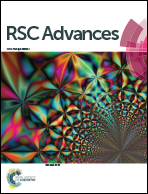Role of phase transformation of barium perborates in the effective removal of boron from aqueous solution via chemical oxo-precipitation
Abstract
This work developed a chemical oxo-precipitation (COP) process for the removal of boron from aqueous solution. Hydrogen peroxide was utilized to convert boric acid to perborate anions, which precipitated directly with barium as barium perborates, and so efficiently reduced the boron level via phase transformation at room temperature. Several experimental parameters were investigated to evaluate the appropriate conditions for the phase transformation, including the pretreatment time and pH (of the mixture of boric acid with hydrogen peroxide), the reaction pH and the molar ratios of hydrogen peroxide and barium to boron. The results revealed that the reaction time of COP was shortened due to the speciation of perborate anions during pretreatment. The reaction pHr was crucial for COP because the phase transformation of barium perborates only occurred at a pH range of 8.5–10. Under optimal conditions – initial [H2O2]/[B] = 2, [Ba]/[B] = 0.8, pHp = 10.5 ± 0.1, timep = 20 minutes, and pHr = 10 ± 0.2 – the boron concentration was reduced from 1000 ppm to less than 3 ppm in 3 hours.


 Please wait while we load your content...
Please wait while we load your content...